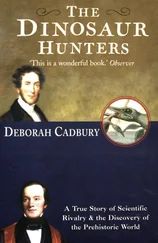“I don’t think the boy should be fobbed off with a trivial token. I feel he should receive something that he really wants and would value. On the other hand, it depends entirely upon what you, the giver, can afford, and only you can know this.”
Chummy brightened, and a huge smile lit her features. “Actually, I know what Jack wants more than anything else - a bicycle! And I’m pretty sure Pater would buy one for him if I explained the circumstances, what? He’s a sporting old stick, and always coughs up for a good cause. I’ll write to him tonight.”
Of course Pater coughed up, happy to see his only daughter fulfilled at last. He could no more understand her determination to become a missionary than he could understand her passion for midwifery, but he would support it to the end.
A new bicycle meant a new life for Jack. Very few boys had such a possession in those days. For him, it meant more than status. It meant freedom. He was an adventurous boy, and went miles beyond the East End on his bike. He joined the Dagenham Cycling Club and competed in time trials and road races. He went camping alone in the Essex countryside. He went as far as the coast, and saw the sea for the first time.
Chummy was delighted, and his continued friendship was her greatest joy. He seemed to feel she needed his protection, and so every day after school Jack would turn up at Nonnatus House to escort her on her evening visits. His instinct that the children of the Docks would tease and torment her were right, because on the whole the cockneys did not take to Chummy, and made fun of her behind her back. Her huge size, pedalling steadily along the streets on an ancient solid-wheeled bicycle, brought crowds of children to a standstill, and they lined the pavement shouting things like “what-ho” and “jolly good show, actually” or “steady on, old bean” amid loud-mouthed guffaws. And, to rub salt into the wound, they called her “The Hippo”. Poor Chummy treated it with good humour, but we all knew how deeply it hurt her. But when tough, pugnacious, street-wise Jack was with her, the children kept their distance. We all saw him on different occasions, standing in the street or the tenement courtyards, holding two bicycles, his lower jaw thrust forward, his stocky legs slightly apart, coolly looking around him, confident that a look was all that was needed to to protect “Miss”.
Twenty-five years later, a shy young girl called Lady Diana Spencer became engaged to marry Prince Charles, heir to the throne. I saw several film clips of her arriving at various engagements. Each time when the car stopped, the front nearside door would open, and her bodyguard would step out and open the rear door for Lady Diana. Then he would stand, jaw thrust forward, legs slightly apart, and look coolly around him at the crowds, a mature Jack, still practising the skills he had acquired in childhood, looking after his lady.
There must be aspects of every job that are disliked. I did not like antenatal work. In fact I would go so far as to say that I hated antenatal clinic, and dreaded the arrival of each Tuesday afternoon. It was not just the hard work - though that was hard enough. The midwives tried to organise the day-book so that we could finish our morning visits by twelve noon. We had an early lunch, and at one-thirty we started to set up the clinic in order to open the doors at 2 p.m. Then we worked through until we were finished, often as late as 6 or 7 p.m. After that, our evening visits began.
That did not bother me - hard work never did. What really got me, I think, was the sheer concentration of unwashed female flesh, the pulsating warmth and humidity, the endless chatter, and above all the smell. However much I bathed and changed afterwards, it was always a couple of days before I could get rid of the nauseating smells of vaginal discharge, urine, stale sweat, unwashed clothes. It all mingled into a hot, clinging vapour that penetrated my clothes, hair, skin - everything. Many times, during the routine antenatal clinics, I had to go out into the fresh air and lean over the rail by the door, heaving, forcing down the urge to be sick.
Yet we are all different, and I did not meet any other midwife who was affected in this way. If I mentioned it, the reaction was one of genuine surprise. “What smell?” or “Well, perhaps it got a bit hot.” So I didn’t make any further comments about my own reaction. I had to remind myself continuously of the huge importance of antenatal work, which had contributed so greatly to the drop in maternal deaths. Memory of the history of midwifery, and the endless sufferings of women in childbirth, kept me going when I was thinking, I just cannot bring myself to examine another woman.
Total neglect of women in pregnancy and childbirth had been the norm. Among many primitive societies, women menstruating or with child, or in labour or suckling the child, were regarded as unclean, polluted. The woman was isolated and frequently could not be touched, even by another woman. She had to go through the whole ordeal alone. Consequently only the fittest survived, and by the processes of mutation and adaptation, inherited abnormalities, such as disproportion in the size of the pelvis and the foetal head, died out of the race, particularly in remote parts of the world, and labour became easier.
In Western society, which we call civilisation, this did not occur, and a dozen or more complications, some of them deadly, were superimposed on the natural hazards: overcrowding, staphylococcal and streptococcal infection; infectious diseases such as cholera, scarlet fever, typhoid and tuberculosis; venereal disease; rickets; multiple and frequent childbirth; the dangers from infected water. If you add to all this the attitude of indifference and neglect that often surrounded childbirth it is not hard to understand how childbirth came to be known as “the curse of Eve”, and how women could often expect to die in order to bring forth new life.
The Midwives of St Raymund Nonnatus held their clinic in a church hall. The idea today of conducting a full-scale antenatal clinic in a converted old church hall is horrifying, and sanitary inspectors, public health inspectors, every inspector you can think of would be there condemning it. But in the 1950s it was by no means condemned, in fact the nuns were highly praised for the initiative and ingenuity they had shown in the conversion. No structural changes had been made, apart from the installation of a lavatory and running cold water. Hot water was obtained from an Ascot water heater fixed to the wall near the tap.
Heating was provided by a large coke fire in the middle of the hall. It was a black cast iron construction which had to be lit earlier in the morning by Fred, the boilerman. Such coke fires were very common in those days, and I have seen them even in hospital wards. (I recall one ward where it was the practice to sterilise our syringes and needles by boiling them in a saucepan placed on the stove). These stoves were very solid, flat topped, and you had to fill them by opening the circular lid and tipping the coke in from a coke-hod. It required quite a bit of muscle power. The stove was situated in the middle of the space, so that heat was radiated all around. The flue went straight up the middle, to the roof.
A few examination couches were available, with movable screens to provide privacy, and wooden desks with chairs, where we wrote up our notes. A long marble-topped surface stood near the sink, upon which we placed our instruments and other equipment. A gas jet stood on this surface, with a box of matches beside it. This single jet of flame was used continuously for boiling up the urine. I can smell it now, more than fifty years later!
The clinic, and those like it all over the country, may sound primitive today but it had saved countless thousands of lives of both mothers and babies. The Midwives’ clinic was the only one in the area until 1948, when a small maternity unit of eight beds was opened in Poplar Hospital. Prior to that, the hospital had no maternity unit even though Poplar was said to have a population of fifty thousand people per square mile. When the decision was taken after the war to open a hospital unit, no special provision was made. Quite simply, two small wards were allocated for maternity - one for lying-in, and the other for delivery, doubling-up as an antenatal clinic. This was inadequate, but it was better than nothing at all. Accommodation, equipment, technology, were not really important. What was important was the knowledge, skill and experience of the midwife.
Читать дальше












